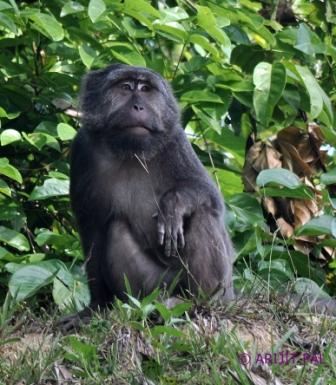Facts About Nicobar long-tailed macaque
The Nicobar long-tailed macaque, a subspecies of the crab-eating macaque, inhabits the Nicobar Islands in the Bay of Bengal. These intriguing primates can be found on Great Nicobar, Little Nicobar, and Katchal, flourishing in tropical and subtropical moist broadleaf forests.
These macaques have a distinctive appearance with brownish to grey fur, pinkish-brown faces marked with white spots on their eyelids, and notably long tails relative to their bodies. Males are typically larger than females and possess more pronounced canine teeth. One interesting feature is their cheek pouches, which they use to store food. While they can live up to thirty years in captivity, their lifespan in the wild is generally shorter.
A 2003 study identified approximately 788 troops of these macaques in the wild, with each troop averaging about 36 members. They are predominantly located in the Great Nicobar Biosphere Reserve and its two national parks. Despite being under protection, these macaques frequently conflict with humans due to habitat encroachment, leading to crop damage and retaliatory hunting to protect plantations.
These macaques favor environments such as mangroves, coastal forests, riverine areas, and inland forests up to altitudes of 600 meters. Their diet primarily consists of fruits, but they also consume leaves, insects, and small animals. Being social creatures, they typically forage in the mornings and evenings, resting during the midday heat.
Conservation efforts are vital for these macaques, as they are listed as vulnerable on the IUCN Red List. Their habitat is increasingly disturbed by human activities. In 2002, the Wildlife Institute of India classified them as critically endangered, underscoring the need for more effective conservation measures, particularly in terms of captive breeding programs.

 Singapore
Singapore